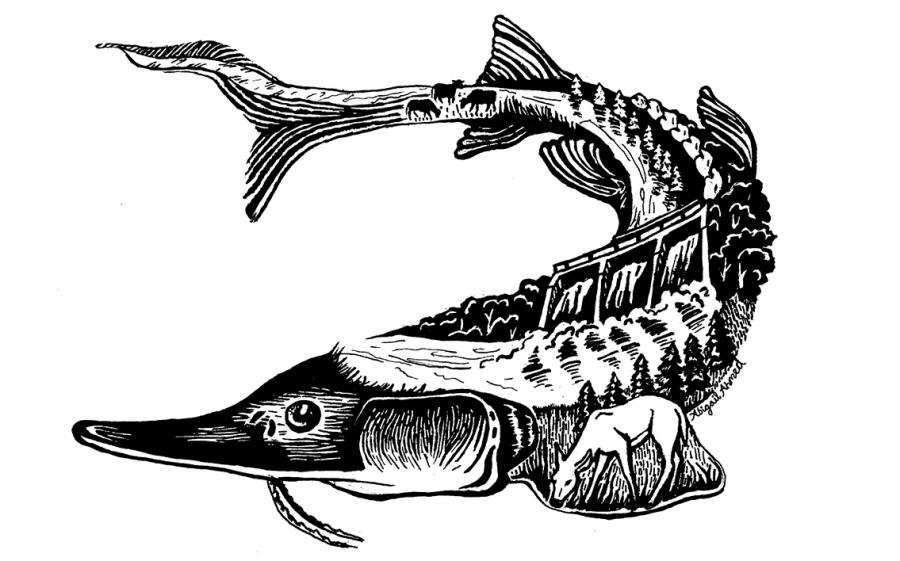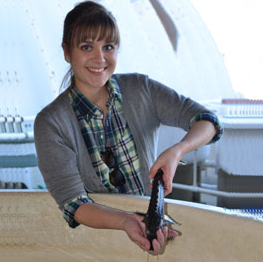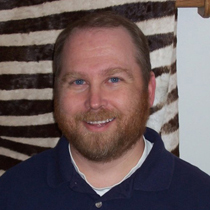The One Health Science & Art Series is an ongoing illustration series connecting art and science. These unique illustrations are created by Abbey Snyder, Nebraska One Health Graphic Designer, through meeting with local scientists and experts. Each illustration features Nebraska-native animals and explores the connections between habitat, shared environment, habitat change/land use change, and threats that the animal may face.
T-shirts are now available through the UNL Maps & More Store! Proceeds help support student activities.

Bison
There was once a time when bison roamed freely across the plains. Habitat change and land use change has made seeing even a small bison herd extremely rare in Nebraska. What once was prairie and open land, has become cities, fenced off pastures for cattle, or fields. This change in land use also affects other animals that call the prairie their home, such as pollinators and foxes.

Blanding's Turtle
The Blanding's turtle is an endangered turtled that can be found in northern areas of Nebraska and parts of central and eastern United States. These turtles can be easily identified by their bright yellow chin/throat and their smiling expressions. Blanding's turtles face a number of threats from predators and habitat loss. For example, roads make it hazardous for turtles to travel safely. This turtle does not reach sexual maturity until their late teens and can live into their seventies.

Meet the Scientist Dennis Ferraro
Dennis Ferraro is the resident herpetologist and a professor of practice at the School of Natural Resources at the University of Nebraska-Lincoln.
Learn More
Pallid Sturgeon
The Pallid Sturgeon is an endangered fish that can be found in the Missouri and Mississippi rivers. Habitat change related to water flow, such as the creation of dams, has caused a dramatic decline in populations. Dams present an obstacle in the migration, spawning, and food availability for this fish. Also, water pollution as been shown to affect the gender outcomes, such as mostly one gender, making reproduction more difficult.

Meet the Scientists: Jamilynn Poletto
Jamilynn Poletto, assistant professor within the School of Natural Resources, had an unusual beginning to her career. Poletto teaches ichthyology, ecophysiology of wildlife and graduate seminars. For her research, she focuses on integrating studies of behavior and physiology of endangered fishes with conservation and management plans. Using this information, she can make more effective management plans. In the field, researchers find that stressors such as habitat fragmentation, water temperatures, or invasive species may cause the decline in fish populations. Poletto wants to figure out the exact stressor causing a specific fish decline.
Learn More
Mark Pegg
Mark Pegg is a fisheries ecologist and associate professor in the School of Natural Resources. He is associated with the undergraduate major in fisheries and wildlife and the graduate specializations in aquatic ecology and wildlife ecology. Most of Mark's career has been dedicated to working on fisheries and aquatic ecosystem issues. These interests have generally led him to conduct research centered on the ecology of flowing systems, fisheries management, the impacts of aquatic nuisance species and restoration ecology.
Learn More